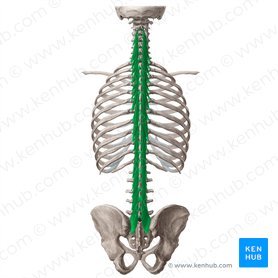What is the Ultimate Cross-Training Tool?
1) Zech A, Hübscher M, Vogt L, Banzer W, Hänsel F, Pfeifer K. Balance training for neuromuscular control and performance enhancement: a systematic review. J Athl Train. 2010;45(4):392-403. doi:10.4085/1062-6050-45.4.392
2) Hung YJ. Neuromuscular control and rehabilitation of the unstable ankle. World J Orthop. 2015;6(5):434-438. Published 2015 Jun 18. doi:10.5312/wjo.v6.i5.434
COUPON CODE: AMY For a 10% Discount
The Revbalance board is something that I have recently come across. I was looking for a way to work on my ankle strength however I found out it is for way more than just balance.
GET READY TO HAVE FUN!!
The Revbalance board is for so many different uses:
1) Cross training for athletes that require balance or core strength….duh .ALL athletes, lol.
2) Someone recovering from chronic ankle sprains and looking to improve their balance…we will talk more about later.
3) Someone looking for a fun way to improve their core strength.
4) Low impact activity
WHO IS IT NOT FOR??? The balance board is not for someone has fallen from balance in the last 6 months!-This person needs a professional who can provide safe assistance. Go see your local physical therapist if your loved one is falling. They can help!!
So lets talk about balance and what exactly is balance??
There are 3 components of balance (things that contribute to balance):
1) Visual system
2) Proprioceptive system (feel) You ability to feel where your body/joints are in space—For example close your eyes, raise your arm up, you can “feel” that your arm is up, perceiving where body is without your eyes.
3) Vestibular system—your inner ear, a very complex system that drives our brains ability to perceive accelerations and directional movement by these little tiny crystals in our inner ear. It is common to have impairments to our vestibular system as we age or with violent accidents. Have you ever heard of vertigo? That is an impairment to some one’s vestibular system, and boy can it be scary for some people.
If you are missing any one of these your balance can be affected. The Revbalance board trains/works the proprioceptive system.
The Revbalance board has many different levels of difficulty. It comes with a half foam roller, wobble ball, and a smooth roller.
Levels of difficulty starting with beginner:
Level 1- Beginner
HALF FOAM ROLLER
1) use the half foam roller- Flat side down- Eyes open, Double leg
2) Single leg
2) Half foam roller eyes closed-Double leg
Level 2- Intermediate
Dyna Disk
1) Dyna Disk (rounded ball) double leg, eyes open
2) Dyna Disk on single leg
3) Dyna Disk double leg, eyes closed
Level 3- Advanced
Roller
1) Roller-double leg on carpet
2) Roller double leg on smooth surface
3) Roller single leg…I have not attempted this one, so be careful, lol!
Too rough to surf? Try this to improve your stability on the board!
CORE KILLER
Multifidus Muscle, it’s so important for back health!
I was playing around on the board one day and did a plank. I was surprised at how challenging it was. You can put your feet on the board or your hands. If you want the ultimate challenge use your arms on the board and lift one leg. This really works those little muscles on your spine that are often weak which cause low back pain. So yes, the balance board can improve low back pain…CRAZY but true!!!
Clinically, balance training is an effective intervention to improve static postural sway and dynamic balance in both athletes and non athletes (1).
For some great workout leggings check out CRZ Yoga…its a great Lulu dupe! Use Code: AMYPT10OFF for 10% off
Disclaimer Amy the PT girl is to be used for educational purposes only. It is not intended to diagnose or treat medical conditions. It is recommended you consult your healthcare provider before beginning any exercise program. If your condition does not improve or worsens, stop exercises and consult your physician right away.
If your looking for one-on-one guidance please feel free to contact me through email or submitting your information in the contact section. You can also find video’s of this exercise on my You Tube Channel.







